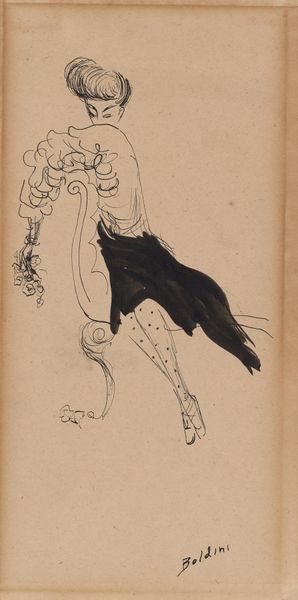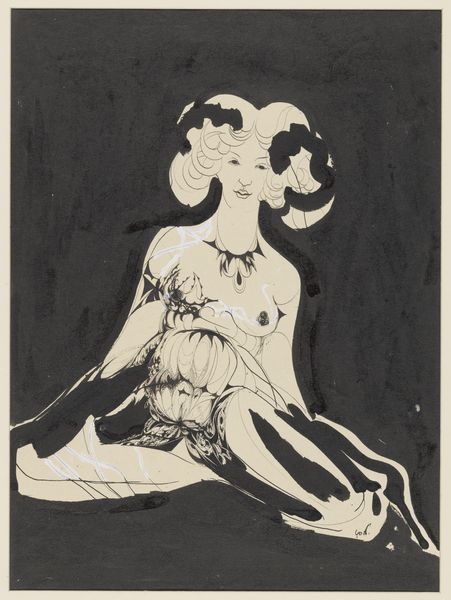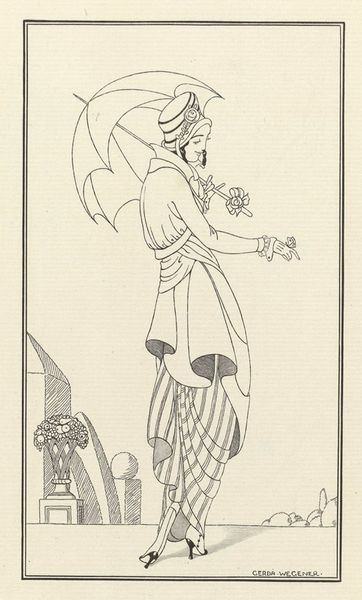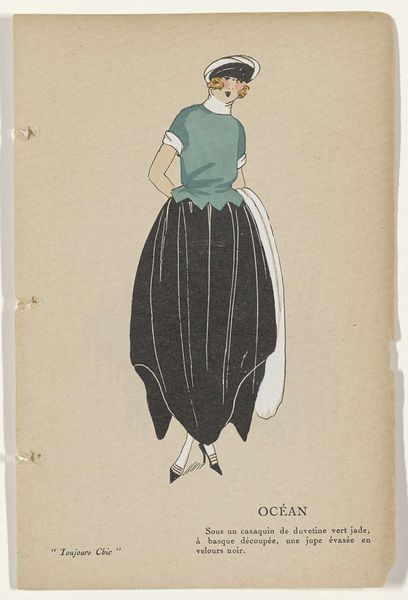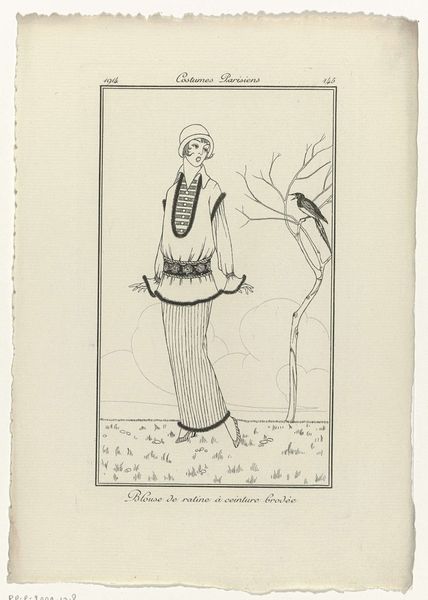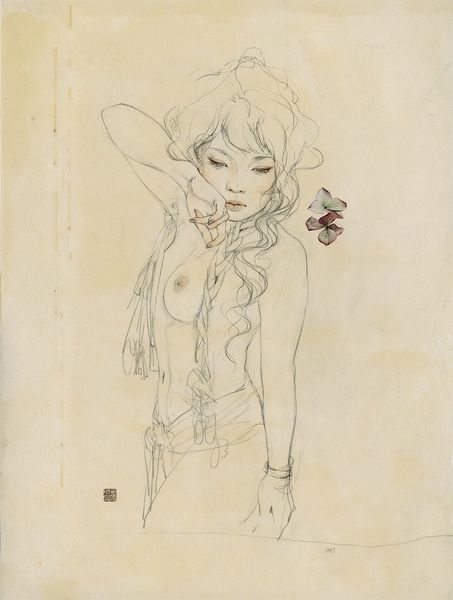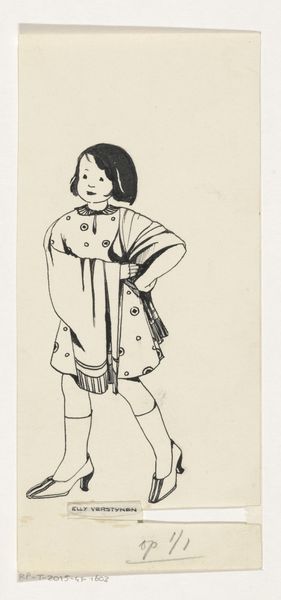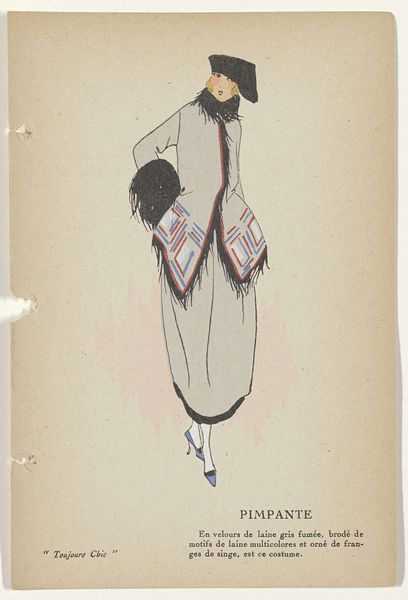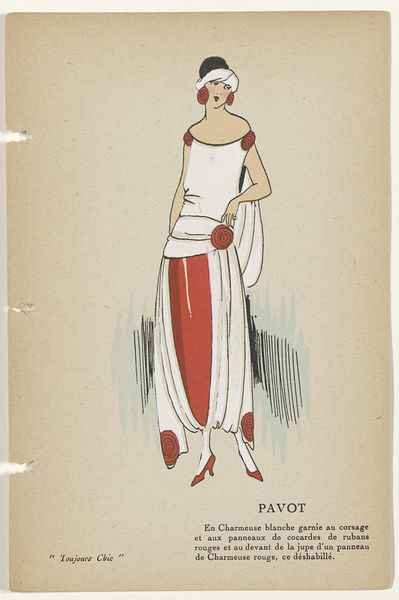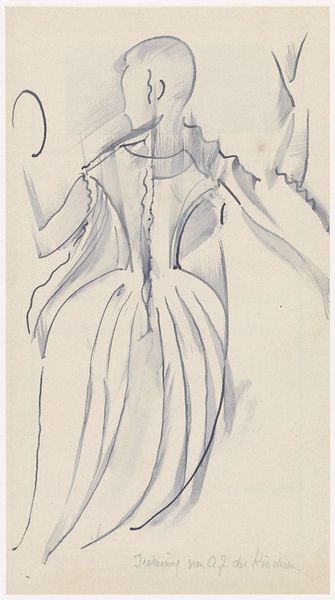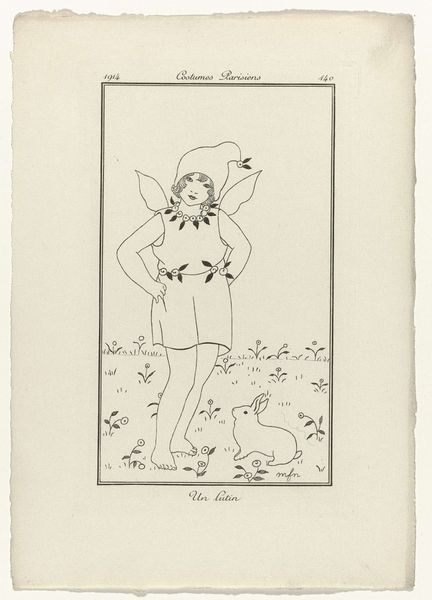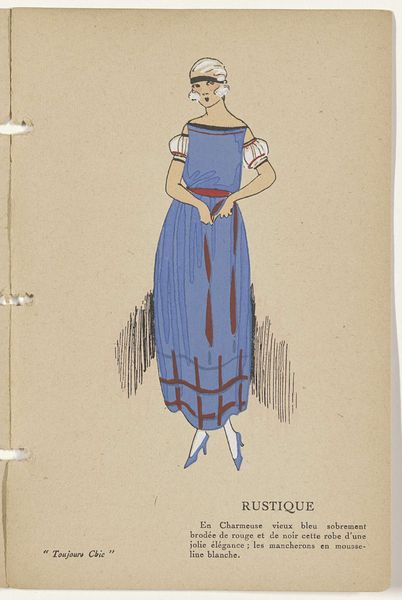
drawing, paper, ink
#
portrait
#
drawing
#
quirky illustration
#
childish illustration
#
cartoon like
#
cartoon based
#
cartoon sketch
#
figuration
#
paper
#
personal sketchbook
#
flat colour
#
ink
#
costume
#
cartoon style
#
cartoon carciture
#
cartoon theme
Dimensions: height 166 mm, width 100 mm
Copyright: Rijks Museum: Open Domain
Curator: Looking at this piece, I’m immediately struck by the air of fancifulness. It’s like a figure stepped right out of a dream. Editor: This drawing, “Jongen in kostuum van bladeren en eikels,” or “Boy in Costume of Leaves and Acorns,” created sometime between 1875 and 1925, presents a curious intersection of childhood and constructed identity, doesn’t it? It is rendered with ink on paper. Curator: Absolutely! It's a child playing dress-up, yet the theatricality is palpable. We're looking at a drawing for a costume. It suggests performances and staged presentations. I can’t help but wonder, within the context of its time, what norms it plays into or pushes back against. Editor: Exactly. The boy's leafy costume, while playful, invites questions. Was it part of a children's theater production? Was it designed for carnivals, popular during this period? These stagings often participated in forming specific political ideologies, and in some cases created alternative performances for marginalized voices. And how did it play into existing understandings of gender and youth? The image prompts broader questions of representation and performance. Curator: There's also the social commentary woven into costume design, of course. The choice of leaves and acorns evokes ideas of nature, purity, perhaps even a critique of urban life and industrialization prevalent at the time. This also connects to certain political organizations using similar aesthetics of youth and innocence. Editor: And this piece can prompt reflections on childhood and visual representation even now. The boy is a child but he has also been dressed and framed. I keep asking myself whether a person of color would be painted or illustrated that way, too. How do factors of race and social standing inflect access to and acceptance within the visual sphere? Curator: It leaves me with a deeper appreciation for the way historical contexts always permeate even the most seemingly innocent artwork. Editor: Agreed. It reinforces the power of art to both reflect and shape our understanding of identity, performance, and politics. It leaves me pondering on the responsibility that comes with constructing such portrayals, then and now.
Comments
No comments
Be the first to comment and join the conversation on the ultimate creative platform.
